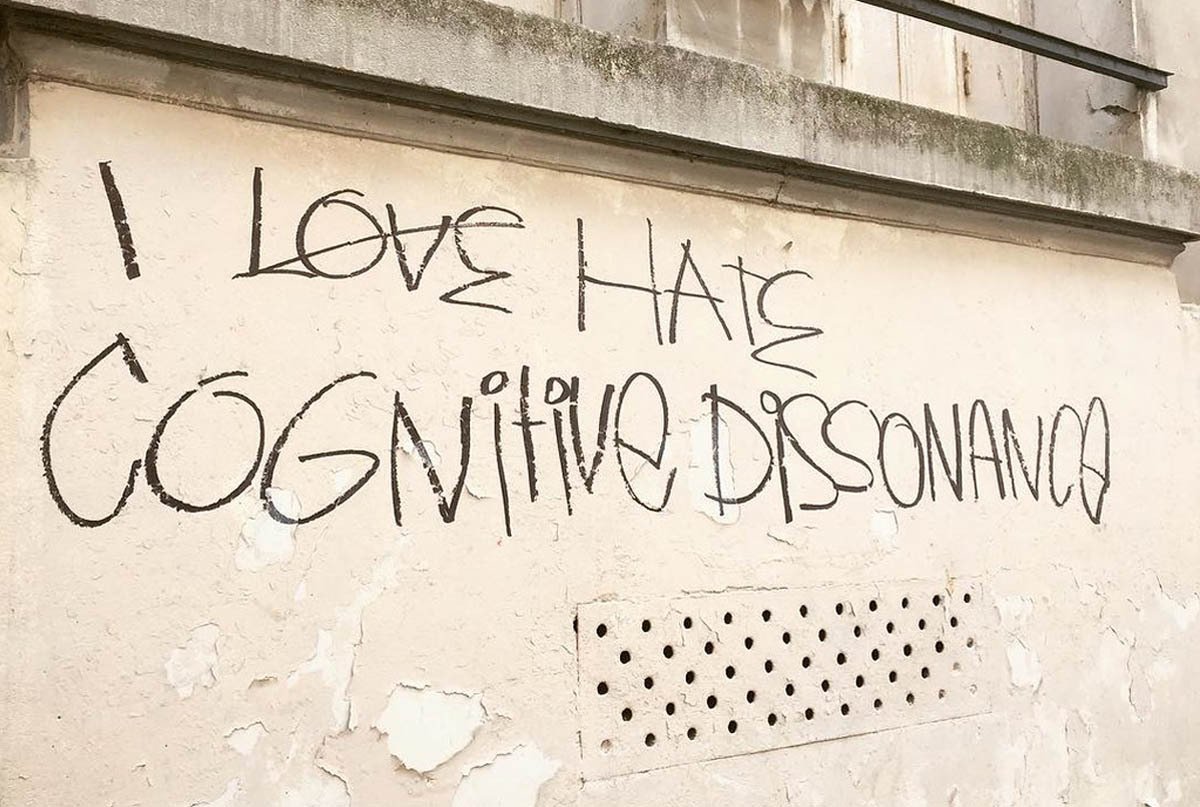
Emma Monk takes a look at the ease with which Covid misinformation is created and spread and at the cognitive dissonance on display.
Within days of scientists discovering a new Covid-19 variant, now called ‘Omicron’, the usual anti-science/anti-vax culprits were trying to find ways to cast doubt over it on social media.
I made a comment on Twitter praising the speed at which scientists had discovered, sequenced, characterised and tracked this new variant, and fairly quickly my tweet was getting lots of comments about how the variant wasn’t new and had been around since either July 2021 or November 2020 (two very specific dates!)
Apparently the theory is that the variant has been around for months but they (it is unclear who ‘they’ might be) have rolled it out now, just in time to ruin Christmas! Maybe it’s the Grinch, who knows?

What does the available data say about when Omicron emerged?
Trevor Bedford, who studies the evolution of viruses, showed using genetic analysis that this variant broke away from its common genetic ancestor in October, supporting the findings that the first time it was seen in the lab was from a patient sample taken on 11 November.
Prof. Tom Wenseleers, a biology and biostatistics professor, produced some amazing graphics showing Omicron appearing in early November – when the Delta variant was responsible for 100 per cent of the Covid-19 cases in South Africa – and how it is now responsible for more than half the cases after only two weeks.
John Burn Murdoch, who makes the graphs for the Financial Times, also took the data and was able to show that Omicron is outcompeting other variants at a much faster rate than previous variants did.
That’s three different experts, using different scientific techniques, all showing that this variant has only been in existence for a few weeks.
So why the claims that Omicron is actually five or even 12 months old?
A number of people tweeted to tell me I was talking rubbish when I said it was new. It took a while for anyone to actually back up their claim. The first piece of evidence offered to me was a tweet containing a video of the South African health minister; I can only assume they didn’t actually watch the video clip, because it made no reference to the variant being discovered in July!
The next piece of evidence posted to back up their claim was an annotated screen shot from the World Economic Forum (WEF) website, supposedly showing an article, written in July, talking about Omicron.
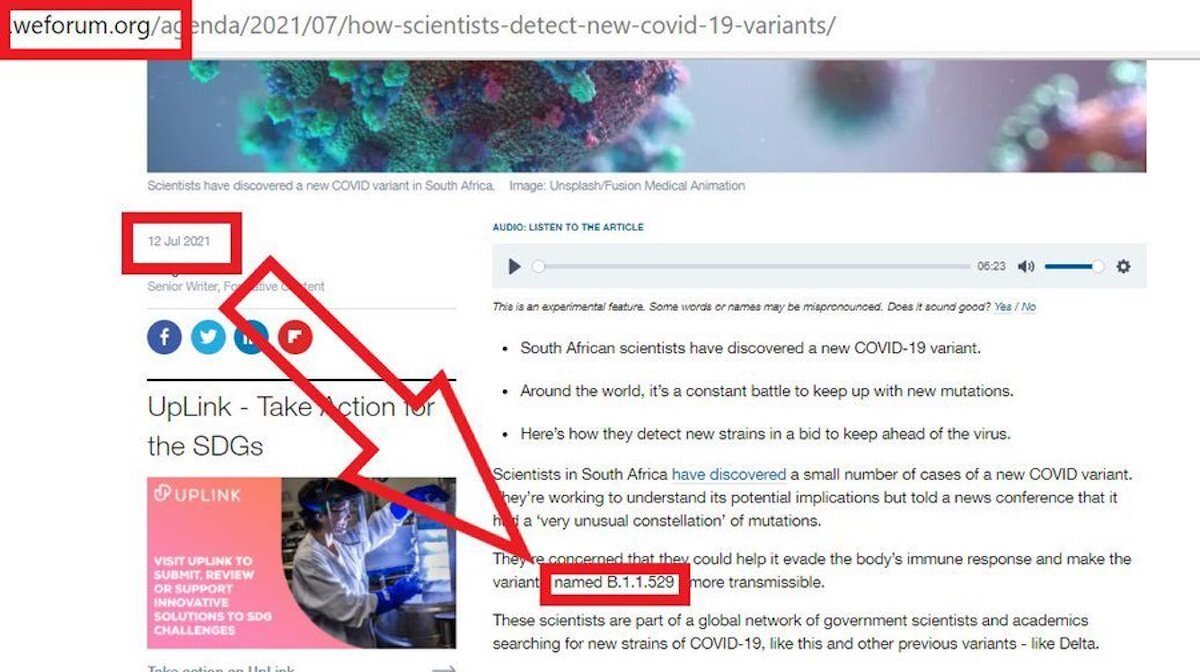
That seemed a bit odd, given what I had already read about the origins of the variant, so I thought I would check the webpage it was said to have come from. It is based on an article, originally written in July 2021, entitled “Explainer: This is how scientists detect new variants of COVID-19”. The original article referred to the Delta, Beta and Alpha variants. On the 26 November the article was updated to include details about the new Omicron variant. It very clearly said at the top of the article “This article was last updated on 26 November 2021” – yet this line has been removed from the screenshot shown above. The article has been updated again to make it really clear what has happened!
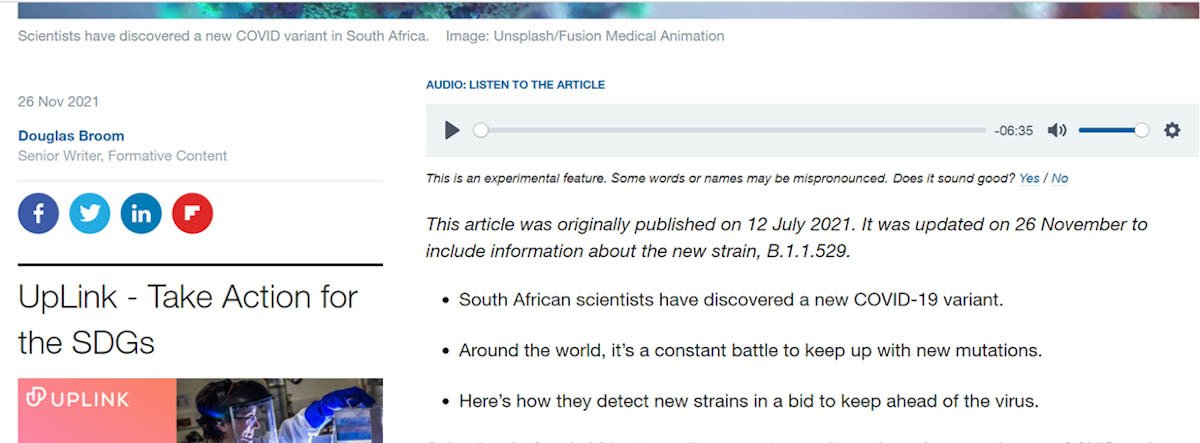
So now we had cleared up the confusion over July, where had the claims around November 2020 come from?
Several people sent me another screenshot, this time from the WHO website, showing a table of all the variants of concern and apparently showing Omicron having originated in November 2020. Again, this didn’t seem right, so I checked the WHO website itself, and lo and behold, the table says November 2021, not 2020.
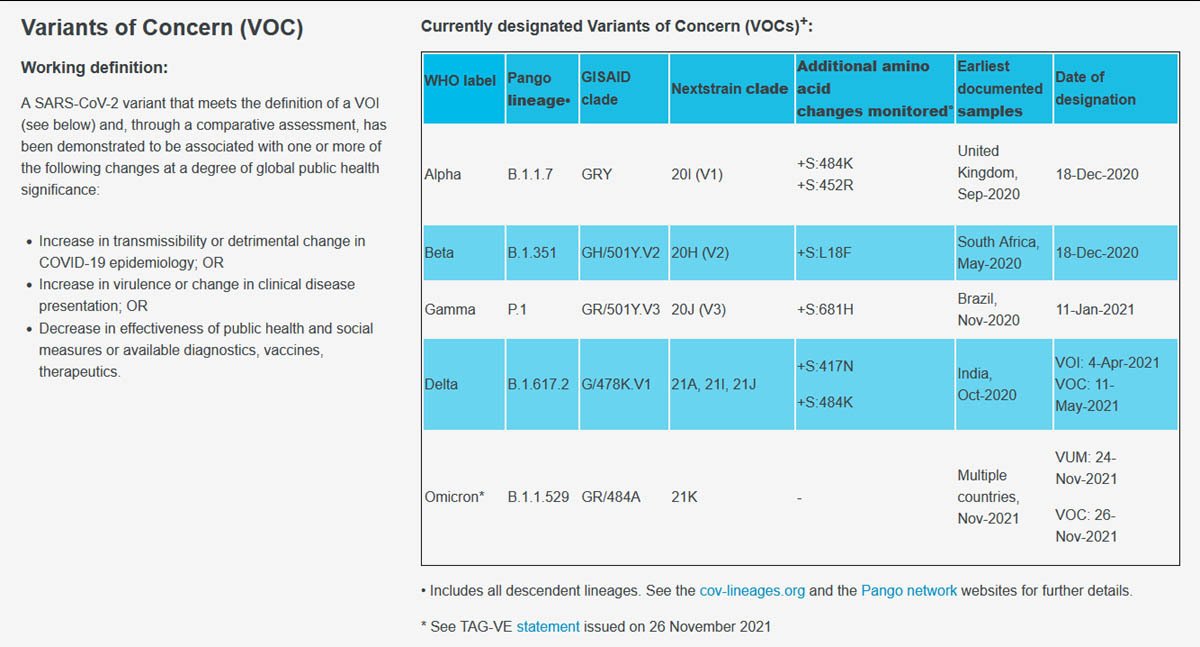
When I pointed out that the original screenshot appeared to have been doctored, the response was that the WHO must have changed their table to keep up the façade of it being a new variant. So I went to The Web Archive and checked the WHO website on multiple dates prior to last week, and there are no mentions at all of the Omicron variant.
The WHO table screenshot seems to have arisen either from someone deliberately manipulating the screenshot, or the WHO having briefly published the table with a typo in it, when someone happened to capture a shot of it. I initially suspected the former, especially when my teenage son said, “Oh that would be easy, I used to do stuff like that in year four!” He showed me how to alter a screenshot, and I created my own version of the table as an example of how simple it is to do:
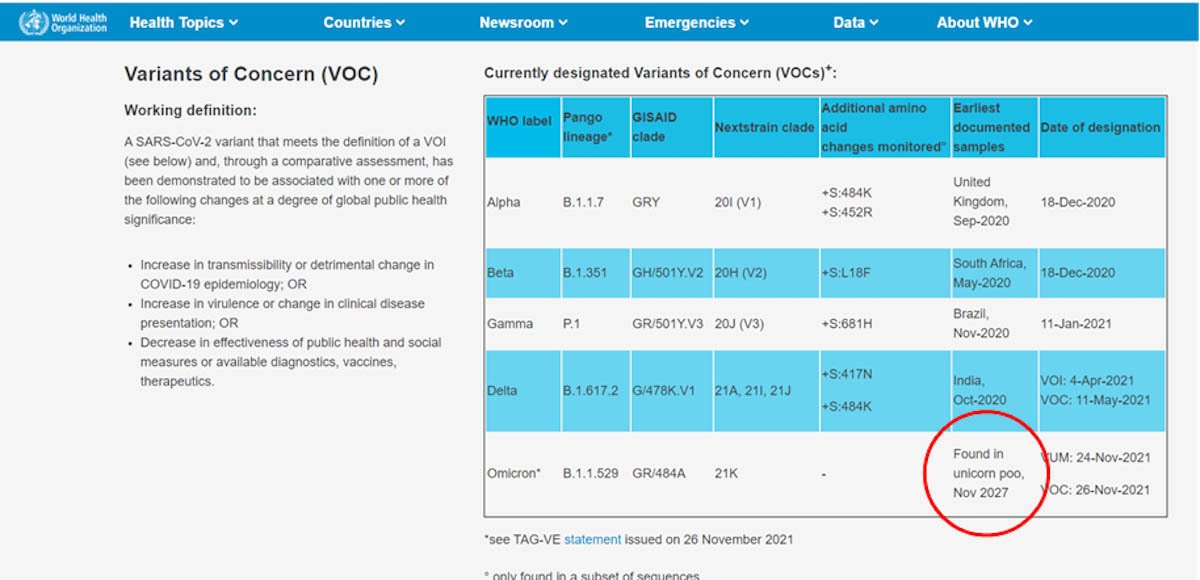
This highlights how careful you have to be when you see a screen shot from a webpage: anyone can change the words on a webpage temporarily with a simple right-click of the mouse, and then take a screenshot. The webpage isn’t actually changed, but just how you see it on your screen.
I eventually found out that the suspect screen shot originated from a Swedish tweet. After it had been retweeted over a thousand times, the ‘creator’ admitted that the WHO had updated the typo shortly after he took the screen shot. An innocent mistake on his part that was hijacked by the anti-science crowd? Unfortunately, I suspect not. He was careful to cut the final column off his shot, which I assume was because it showed accurately that the date of designation was November 2021. It must have been clear that the 2020 date was a typo, but he wanted to spread the narrative that the variant wasn’t new.
A final piece of alleged ‘proof’ that Omicron had been around in 2020 was in a tweet citing an article from the journal Nature, claiming “it clearly states late 2020”: the text from the Nature article (attached to the tweet, with added highlight) is:
“To understand the threat B.1.1.529 poses, researchers will be closely tracking its spread in South Africa and beyond. Researchers in South Africa mobilized efforts to quickly study the Beta variant, identified there in late 2020, and a similar effort is starting to study B.1.1.259.
Moore’s team – which provided some of the first data on Beta’s ability to dodge immunity – has already begun work on B.1.1.259. They plan to test the virus’s ability to evade infection…”
I hope I don’t need to explain why this really doesn’t support the idea that Omicron was around in 2020!
Cognitive Dissonance
‘Cognitive dissonance’ is a phrase often used to describe the inability to take on board information that opposes what you already believe to be true. I found the whole dialogue with various people fascinating in light of this phenomenon.
They believed, because of what they had seen on social media, that Omicron was not a new variant. And it didn’t seem to matter what evidence I provided that their sources were fake; they were unable to accept that they had been misled. They saw that the screenshots were fake when they looked at the original websites, but they argued that the website must have altered the information after the shot was taken.
They were shown links to the Web Archive showing that the websites had not contained any information about Omicron prior to 24 November 2021 but, astonishingly, it was suggested to me that the Web Archive must have been tampered with to remove the evidence of Omicron having been around last year!
So rather than accepting that an article on the WEF webpage had been updated to cover a new variant, that the WHO table had either briefly had a typo or a screenshot was deliberately altered, and that the Omicron variant really was new, it was easier for these people to believe:
- Omicron had been around since at least November 2020;
- its presence was public-enough knowledge for it to be on the WHO website and on the World Economic Forum website;
- but the information was not public enough for any other website/social media platform/scientific paper to have mentioned it for 12 months;
- then “they” decided it was time to ruin Christmas with a new variant…
- at which point the WHO changed their table to pretend Omicron had only just been discovered;
- the Web Archive was hacked and all mention of Omicron was removed from those sites prior to 24 November 2021, and
- multiple scientists were then paid to produce data that showed the variant to be only a matter of weeks old.
I’ll let you be the judge of which is the most likely scenario!
In conclusion
This is one of the more ‘tame’ conspiracy theories doing the rounds, but it just highlights how quickly misinformation can spread, and how hard it is for those already believing in the theory to adjust their beliefs even when they see the evidence laid out before them.
Hopefully, this has also raised awareness of the danger of screenshots: always check the source!
I was ‘blocked’ by a number of the original respondents, presumably because they simply didn’t want to see any more evidence that their beliefs were based on faked information. I did have one respondent who simply said “Fair enough. Seems to be the case.” when I explained the WHO table was doctored. He brightened up my day!
Finally, remember we can all suffer a bit of cognitive dissonance at times; always check your sources before sharing things on social media – even if (in fact especially if), they agree with what you already believe!





